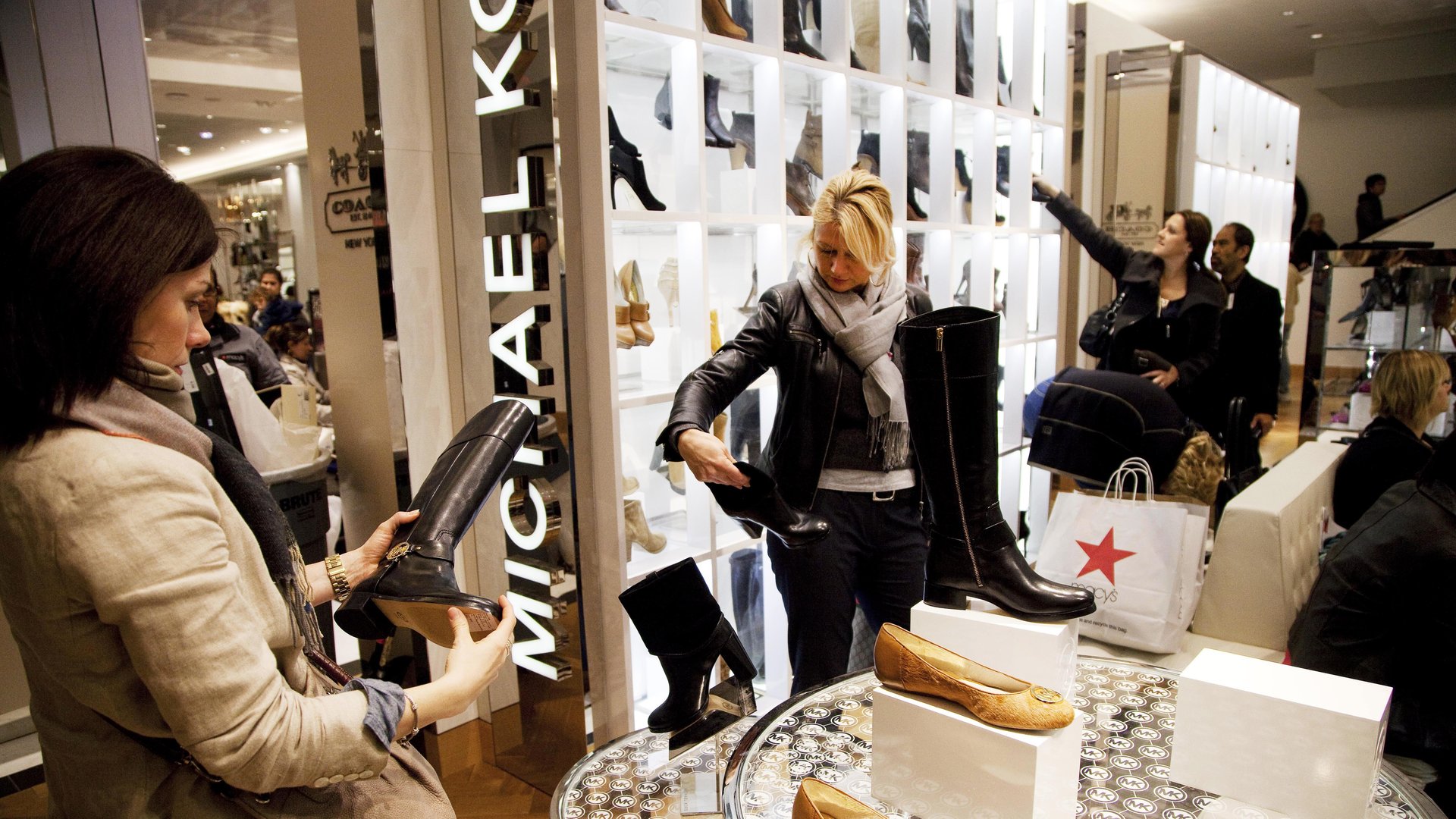“Expensive but not too expensive” is the sweet spot for China’s luxury market
Michael Kors is in good spirits. The seller of relatively affordable luxury clothes and handbags reported today (June 1) that its total sales for the year rose 7.8% to $4.7 billion. Long a mall and department store staple, the brand is thriving even as those US retail institutions suffer.


Michael Kors is in good spirits. The seller of relatively affordable luxury clothes and handbags reported today (June 1) that its total sales for the year rose 7.8% to $4.7 billion. Long a mall and department store staple, the brand is thriving even as those US retail institutions suffer.
John Idol, the brand’s CEO, noted two important new strategies on a call with analysts this morning: One is that Michael Kors is deliberately pulling back on its wholesale business to department stores. The other is that it’s ramping up its business in Asia, especially in China. As far apart as those two moves may seem, they aren’t unrelated.
Sales in Asia increased an impressive 216.4% in the fourth quarter, reaching $65.5 million. In greater China, including Hong Kong, Macau, and Taiwan, sales for the full year totaled $197 million. That success didn’t come overnight. The brand has been steadily investing, and through its licensee, Michael Kors (HK) Limited, built a network of 91 retail stores and six travel retail spots that the licensee operated.
Given the size and success of its operations there, it’s taking the next step, and closed a deal to acquire the licensee for $500 million. “We believe that Asia will ultimately be a $1 billion market,” Idol said, adding that the acquisition is the “cornerstone” of that business.
The deal lets Michael Kors take full control of the retail network it has built, and it’s well-positioned to capitalize. Even though China’s spending on high-end stuff has slowed in recent years, its middle class is mushrooming. A report last year by Morningstar, an equity research firm, estimated that between 2012 and 2022, the country will add 119 million new middle-class households, who are hungry to buy “aspirational luxuries.”
The fashion brands that should benefit, according to Morningstar, are those that offer a palatable first taste of luxury to new consumers. In other words, expensive—but not too expensive. They named Ralph Lauren, Coach, and Swatch as likely beneficiaries of the swell of middle-class buyers. While they didn’t name Michael Kors explicitly, it fits perfectly, and has plenty of room to grow as it’s less exposed in China than pricier labels such as Prada and Gucci.
For years, these brands played the same role to US middle-class shoppers, largely through sales at department stores. But department stores continue to suffer, and brands such as Coach are starting to create some distance. In a shift to its retail strategy, Michael Kors is following suit.
Idol said department stores have relied too heavily on discounting, which hurts the Michael Kors brand image and its margins.
Even so, Michael Kors sales are strong in the Americas, growing 4.6% to $879.1 million in the fourth quarter, and Idol said any press claiming the brand had lost its shine with customers is “just flat out not true.” What’s changed is where they shop. The brand expects to get less revenue from wholesale and more from e-commerce and its own retail stores, in the US and China. So while one door may be closing, another is opening.